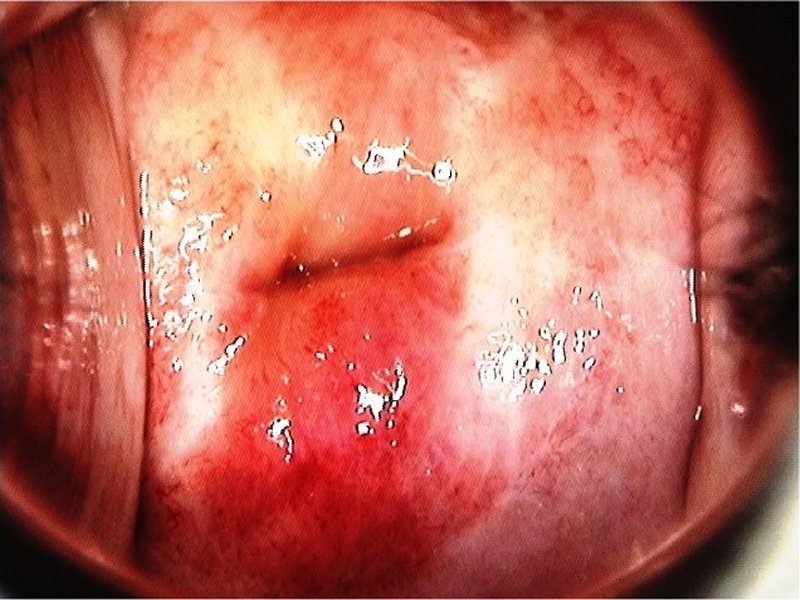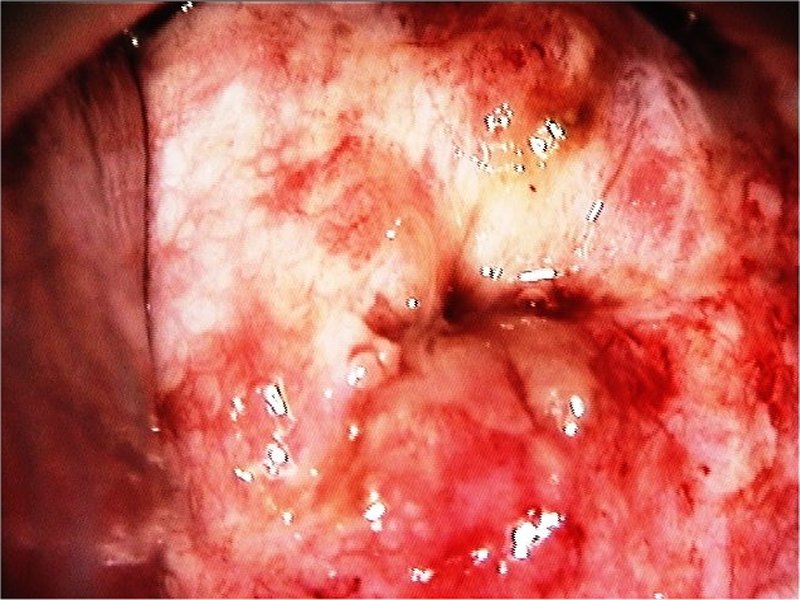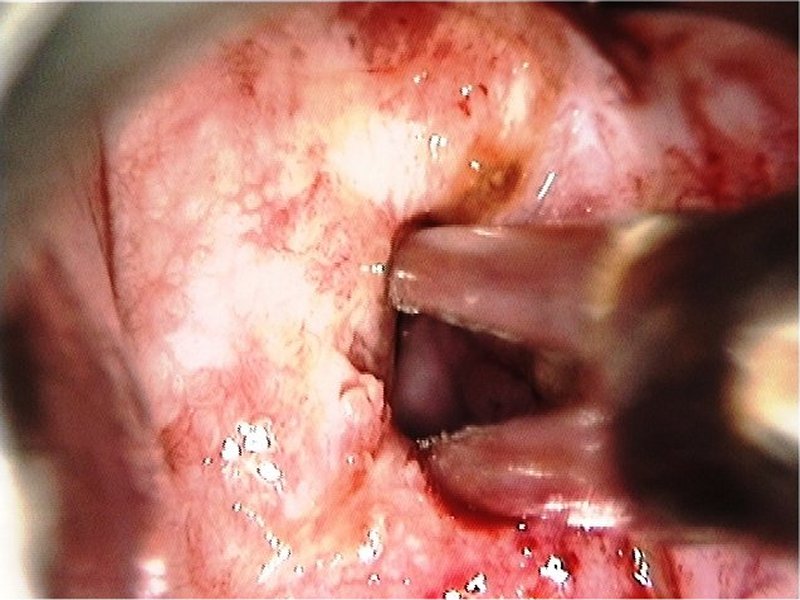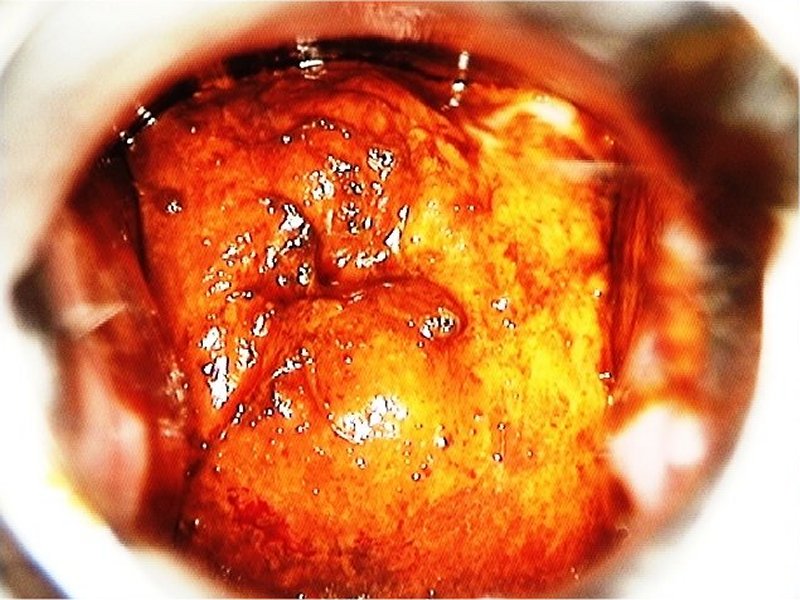Learning colposcopy
Colposcopic appearance of normal cervix
The colposcopic examination
Detection of infections & benign conditions of cervix
Detection of cervical neoplasias
Treatment of cervical intraepithelial neoplasia
Treatment by cryotherapy
Treatment by thermal ablation
Treatment by LLETZ (LEEP)
Treatment by cold-knife conization (CKC)
Cases
Normal
Squamous metaplasia and ectropion
Inflammation and cervicitis
Low grade
High grade
Early and advanced cancers
Miscellaneous
Post treatment
Search with IFCPC criteria
Search with Swede score criteria
Quiz Foreword
Acknowledgement
Authors
Suggested citation
Home
Atlas of Colposcopy: Principles and Practice
Filter by language: English / 中文 / Français / Español / Português / Русский
Early and advanced cancers / Squamous cell cancer
Go back to the list
Colposcopy report (2011 IFCPC nomenclature):
Swede score:
Final Swede score: 10
Case Summary
Go back to the list
| After normal saline |
| After acetic acid |
| Visualization of the SCJ |
| After acetic acid with green filter |
| After Lugol’s iodine |
 General assessment General assessment | |||||||||||||||||
 Normal colposcopic findings Normal colposcopic findings | |||||||||||||||||
 Abnormal colposcopic findings Abnormal colposcopic findings | |||||||||||||||||
 General principles General principles | |||||||||||||||||
 Position and size Position and size | |||||||||||||||||
 Grade 1 (minor) Grade 1 (minor)
|  Grade 2 (major) Grade 2 (major)
|  Non-specific Non-specific
|  Suspicious for invasion Suspicious for invasion
|  Miscellaneous finding Miscellaneous finding
| |
Swede score:
| Nil or transparent | Thin, milky | Distinct, stearin | |
| Nil or diffuse | Sharp but irregular, jagged, satellites | Sharp and even, difference in level | |
| Fine, regular | Absent | Coarse or atypical vessels | |
| < 5 mm | 5-15 mm or 2 quadrants | >15 mm, 3-4 quadrants, or endocervically undefined | |
| Brown | Faintly or patchy yellow | Distinctly yellow |
Final Swede score: 10
Case Summary
| Provisional diagnosis: | Type 3 transformation zone; suspicion of early invasive squamous cell carcinoma. |
| Management: | Multiple punch biopsies. |
| Histopathology: | Squamous cell carcinoma. |
| Comment: | Such extensive lesions with vascular abnormalities should be considered invasive disease. The central part of the transformation zone may be excised with a loop to ensure adequate biopsy material for histopathology. Alternatively, a diagnostic excision can be done by LLETZ or cold-knife conization. |








